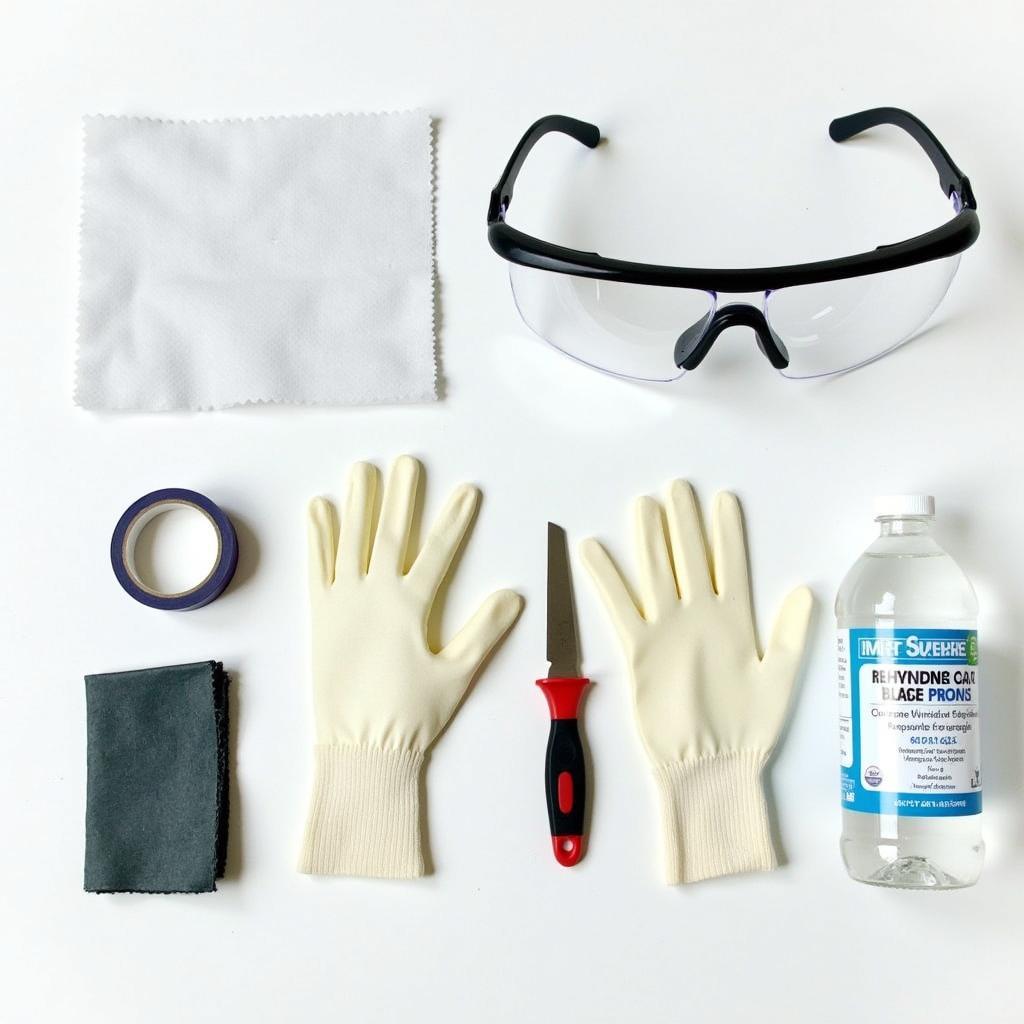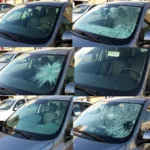Getting a cracked or chipped windshield is never convenient. While some may think a quick trip to the auto glass shop is the only solution, home car window repair is a viable and often cost-effective option for minor damages. This guide will walk you through the process, discuss the necessary tools, and address common questions about DIY car window repair.
Understanding Car Window Damage
Before diving into the repair process, it’s crucial to assess the damage to determine if a DIY fix is appropriate.
Types of Repairable Damage
Home car window repair is generally suitable for:
- Small chips: These are typically less than an inch in diameter and haven’t spiderwebbed significantly.
- Star-shaped cracks: As the name suggests, these cracks resemble a star and are often repairable if caught early.
- Bullseye cracks: These are circular cracks with a central point of impact.
When to Consult a Professional
While DIY repairs can be effective for minor damage, some situations call for professional intervention:
- Large cracks: Cracks longer than a few inches or those that obstruct the driver’s vision require professional repair.
- Deep cracks: Damage that penetrates both layers of the windshield necessitates professional attention.
- Damage near the windshield’s edge: Repairs near the edge can compromise the structural integrity of the windshield.
Tools and Materials for Home Car Window Repair
Successfully repairing your car window at home requires the right tools and materials:
- Car window repair kit: These kits are widely available online and at auto parts stores. Look for kits that include resin, a curing light, and application tools.
- Safety glasses and gloves: Protect yourself from resin and glass fragments.
- Clean microfiber cloths: These are essential for cleaning the damaged area and removing excess resin.
- Razor blade: Used to remove any loose glass fragments or debris from the damaged area.
- Masking tape: Helps create a clean repair boundary around the damaged area.
- Rubbing alcohol: Ensures a clean and grease-free surface for optimal resin adhesion.
Step-by-Step Guide to Home Car Window Repair
Follow these steps to repair your car window at home:
- Prepare the Area: Park your car in a shaded area, clean the damaged area thoroughly with rubbing alcohol, and allow it to dry completely.
- Apply Masking Tape: Carefully apply masking tape around the damaged area, creating a clean boundary for the resin.
- Prepare the Resin: Following the instructions provided in your car window repair kit, prepare the resin according to the manufacturer’s guidelines.
- Inject the Resin: Using the applicator tool provided in the kit, carefully inject the resin into the damaged area, ensuring all cracks and crevices are filled.
- Remove Air Bubbles: Gently press on the resin-filled area to remove any trapped air bubbles. You can also use a pin or needle to carefully pierce and release larger bubbles.
- Cure the Resin: Position the curing light over the repaired area, following the recommended curing time specified in the kit instructions.
- Remove Excess Resin: Once cured, use the razor blade to carefully scrape away any excess resin from the windshield surface.
- Clean and Polish: Finally, clean the repaired area with a clean microfiber cloth to remove any remaining residue and achieve a polished finish.
FAQs about Home Car Window Repair
Can I drive my car immediately after the repair?
It’s best to wait for the recommended curing time specified in your repair kit instructions before driving. This ensures the resin is fully cured and the repair is secure.
Will the repaired area be noticeable?
While DIY repairs are effective for minor damage, they may leave a slight mark or distortion depending on the severity of the initial damage.
How long will the repair last?
A properly executed DIY car window repair can last for several years.
Conclusion
Home car window repair can be a practical and budget-friendly solution for addressing minor chips and cracks in your windshield. By following the steps outlined in this guide and using the appropriate tools and materials, you can effectively repair your car window and restore its clarity. Remember to prioritize safety and consult a professional if you’re unsure about the severity of the damage or the repair process.


